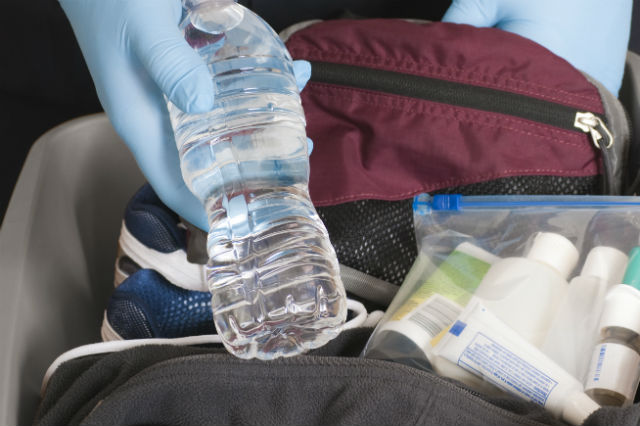Can you bring medicine on a plane? Of course. But – as with most things related to air travel – there are a few rules you should be aware of first.
From understanding regulations for solid versus liquid medications to knowing how much you can carry on you and how it should be packed, here’s what you need to take into consideration before bringing medicine on a plane.
Do Pre-Travel Research
While becoming ill or getting hurt while away from home is not something you want to think about when planning a vacation, it’s better to err on the side of caution, especially if you rely on medication in your everyday life.
- Look up doctors and hospitals near your destination; countries all around the world can be found on the U.S. embassy and consulate websites.
- In the event that you do need medical attention abroad, check if you’ll be covered by your insurance. “Many foreign medical facilities and providers require cash payment upfront and do not accept U.S. insurance plans,” according to Travel.State.Gov. Those with health coverage through Medicare likely won’t be covered while traveling outside of the U.S. either. Contact your insurance company and/or speak with a travel agent to discuss foreign medical care coverage or travel medical insurance.
- Look into the laws of your travel destination. Check with the foreign embassy of the country you are visiting or use a source like The World Factbook to make sure the medications you are bringing aren’t illegal there. Though the Transportation Security Administration does not currently require medications to be in prescription packaging, it might be different elsewhere. Other countries may also ask for a doctor’s letter.
Visit Your Doctor
Before you leave, visit your doctor to make sure you are fit to travel. The Center for Disease Control and Prevention recommends going at least four to six weeks before your trip.
- Talk to your physician about where you’ll be going, for how long, what your living situation will be and the activities you plan to do.
- Make sure you have enough of any prescription medications you may need to cover you during the duration of your trip, but also for a few days after in the case of delays. You can request refills if you know you’ll be close to a pharmacy, or ask your doctor for a longer-term option like a 90-day supply.
- It may not be safe to travel — for yourself or others — if you are ill or recently had a specific injury or surgery. The CDC has a list of situations when you generally shouldn’t travel. Discuss with your doctor to be sure.
- Use sources like CDC Travel Health Notices and Travel Advisories to learn about what potential health-related issues (disease outbreaks, natural disasters, etc.) are going on in other countries. Then, ask your doctor about what you may need in terms of possible vaccinations or allergy medications.
Should travelers with specific medical conditions or disabilities need assistance, the TSA offers several customer service options and a form where you can request TSA Cares Assistance.

Follow Packing Rules
Like everything that goes on an airplane, your medications will need to be screened.
The TSA currently allows travelers to pack pills and other solid medications outside of their original packaging, such as in a pill case, but be aware that other countries could have different rules. It’s also recommended that medicines be clearly labeled to facilitate the screening process. You can travel with solid medications in either your carry-on or checked baggage, but carry-on is the recommended option because it allows easier access and checked baggage could get lost.
Inform the TSA officer of any liquid medications you plan on taking on the plane, as well as any accessories associated with it, such as freezer packs, IV bags, pumps and syringes, and separate them from your other belongings before screening begins. Normally, all carry-on liquids need to follow the 3-1-1 rule, which states that you can bring liquids, aerosols, gels, creams and pastes in your bag and through the checkpoint, as long as they are 3.4 ounces or less, and are contained in one clear, sealable 1-quart bag per traveler. There are exceptions to this rule, so bring your needs to the attention of a TSA officer for help.
The TSA is routinely making updates to its procedures. Make sure to check their security screening guidelines before a trip.
Check out TSA Precheck, which could also cut back the time you spend standing in airport lines, and know your Airline Passenger Bill of Rights.














